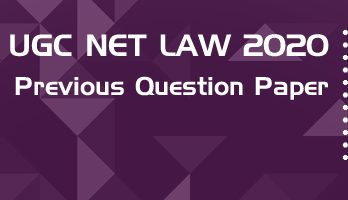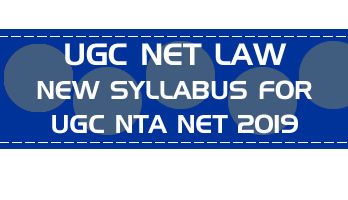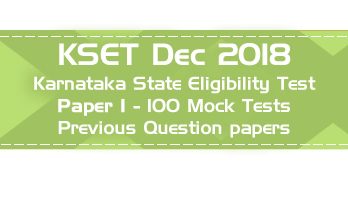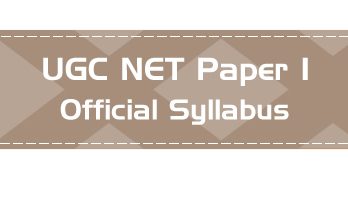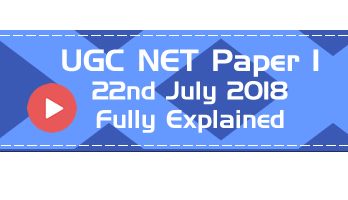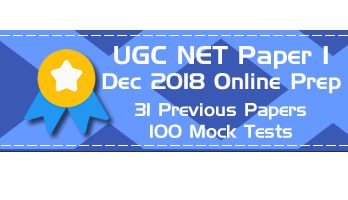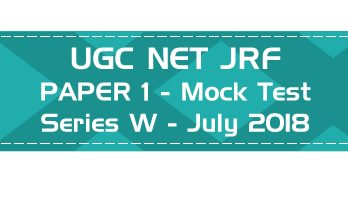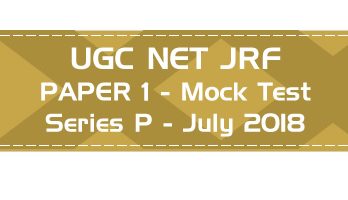- Latest Pattern Mock Tests including comprehension based questions
- Previous Question Papers with Answer Keys - From 2004 till the most recent exam
- 75 Full Length Mock Tests - New Pattern Paper II, with 100 questions each
- 50 Mini Practice Mock tests - with 25 questions each
- Unlimited Practice - New Questions in every attempt of all mocks
- Questions & Answer Choices randomly shuffled in every attempt for better practice
- Database of over 11000+ MCQs covering the entire syllabus
- Unlimited access and practice for one year from the date of purchase
- Accessible 24 x 7 via Smart-Phone browsers and Desktops
Authentic Feedback from previous LawMint users :
I got AIR 21 in CLAT PG. Thank you so much. Your mocks helped me a lot in my preparation 🙂 - Ayushi Jain
I have subscribed to your CLAT PG program and got AIR 36 in this year CLAT PG. I have also secured AIR 54 in AILET PG exam. I would like to thank you. Your mock paper really helps a lot - Shrashank Tripathi
I would like to thank you for the CLAT PG LLM COURSE. Practising mock tests there helped me in getting confidence and hence I was able to get AIR 45 in CLAT PG LLM - Akshay Awasthi
A year back, I relied on the IIT Kharagpur RGSOIPL mock test series by LawMint to prepare for my RGSOIPL entrance test. Few months back, I relied on your UGC NET Law series to prepare for UGC NET. I was the topper of the RGSOIPL entrance, and have cracked JRF in UGC NET. All thanks to LawMint - Anshuman Sahoo
"I got AIR 18 in CLAT PG and General Category rank 28 in AILET PG. I want to thank you for helping me practice well in controlled conditions from any place. It gave me a lot of confidence and I took the tests while travelling too. I also made it to IIT Kharagpur." - Vinodharani
"Lawmint has been of great help to me in securing AIR 25 in AILET PG and AIR 29 in CLAT PG examinations. The subjective and objective approach of the test series kept me up to date with the latest exam pattern." - Bhawna Nanda
"I, Nimmy Saira Zachariah joined you clat test series. I cleared AILET PG with 30th rank. Your test series were of immense help as it gave me clear idea of where my preparations stand thank you once again law mint." - Nimmy S Z
"Hey guys. Where do I start? If I thought that getting AIR 59 in Clat PG was it, then how wrong I was. With Lawmint now I have cracked UGC NET as well." - Joyanta Chakraborty
Note : Answer Keys to all Previous Question Papers published on LawMint are available to registered users of LawMint.com Online Practice Packs.
Check out all the HECI NTA NET or UGC CBSE NET Paper 1 previous question papers here : Previous Papers & Mock Tests
Note : UGC has rolled out a revised syllabus for both Papers 1 & 2 from Jan 2019 onward.
1. Team teaching has the potential to develop:
– Competitive spirit
– Cooperation
– The habit of supplementing the teaching of each other
– Highlighting the gaps in each other’s teaching
2. Which of the following is the most important characteristic of Open Book Examination system?
– Students become serious.
– It improves attendance in the classroom.
– It reduces examination anxiety amongst students.
– In compels students to think.
3. Which of the following methods of teaching encourages the use of maximum senses?
– Problem-solving method
– Laboratory method
– Self-study method
– Team teaching method
4. Which of the following statement is correct?
– Communicator should have fine senses
– Communicator should have tolerance power
– Communicator should be soft spoken
– Communicator should have good personality
5. An effective teacher is one who can:
– control the class
– give more information in less time
– motivate students to learn
– correct the assignments carefully
6. One of the following is NOT a quality of researcher:
– Unison with that of which he is in search
– He must be of alert mind
– Keenness in enquiry
– His assertion to outstrip the evidence
7. A satisfactory statistical quantitative method should not possess one of the following qualities
– Appropriateness
– Measurability
– Comparability
– Flexibility
8. Books and records are the primary sources of data in:
– historical research
– participatory research
– clinical research
– laboratory research
9. Which of the following statement is correct?
– objectives should be pin-pointed
– objectives can be written in statement or question form
– another word for problem is variable
– all the above
10. The important pre-requisites of a researcher in sciences, social sciences and humanities are:
– laboratory skills, records, supervisor. topic
– Supervisor, topic, critical analysis, patience
– Archives, supervisor, topic, flexibility in thinking
– Topic, supervisor, good temperament, preconceived notions
Directions: Read the following passage and answer the question :
Knowledge creation in many cases requires creativity and idea generation. This is especially important in generating alternative decision support solutions. Some people believe that an individual’s creative ability stems primarily from personality traits such as inventiveness, independence, individuality, enthusiasm, and flexibility. However, several studies have found that creativity is not so much a function of individual traits as was once believed, and that individual creativity can be learned and improved. This understanding has led innovative companies to recognise that the key to fostering creativity may be the development of an idea-nurturing work environment. Idea-generation methods and techniques, to be used by individuals or in groups, are consequently being developed; Manual methods for supporting idea generation, such as brainstorming in a group; can be very successful in certain situations. However, in other situations such an approach is either not economically feasible or not possible. For example, manual methods in group creativity sessions will not work or will not be effective when: (1) there is no time to conduct a proper idea-generation session; (2) there is a poor facilitator (or no facilitator at all); (3) it is too expensive to – conduct an idea-generation session; (4) the subject matter is too sensitive for a face-to-face session; or (5) there are not enough participants, the mix of participants is not optimal or there is no climate for idea generation. In such cases, computerised idea-generation methods have been tried, with frequent success.
Idea-generation software is designed to help stimulate a single user or a group to produce new ideas, options and choices. The user does all the work but the software encourages and pushes, something like a personal trainer. Although idea- generation software is still relatively new there are several packages on the market. Various approaches are used by idea-generating software to increase the flow of ideas to the user. Idea Fisher, for example, has an associate lexicon of the English language that cross-references- words and phrases. These associative links, based on analogies and metaphors, make it easy for the user to be fed words related to a given theme. Some software packages use questions to prompt the user towards new, unexplored patterns of thought. This helps users to break out of cyclical thinking patterns, conquer mental blocks, or deal with bouts of procrastination.
The author, in this passage has focussed on
– knowledge creation
– idea-generation
– creativity
– individual traits
Directions: Read the following passage and answer the question :
Knowledge creation in many cases requires creativity and idea generation. This is especially important in generating alternative decision support solutions. Some people believe that an individual’s creative ability stems primarily from personality traits such as inventiveness, independence, individuality, enthusiasm, and flexibility. However, several studies have found that creativity is not so much a function of individual traits as was once believed, and that individual creativity can be learned and improved. This understanding has led innovative companies to recognise that the key to fostering creativity may be the development of an idea-nurturing work environment. Idea-generation methods and techniques, to be used by individuals or in groups, are consequently being developed; Manual methods for supporting idea generation, such as brainstorming in a group; can be very successful in certain situations. However, in other situations such an approach is either not economically feasible or not possible. For example, manual methods in group creativity sessions will not work or will not be effective when: (1) there is no time to conduct a proper idea-generation session; (2) there is a poor facilitator (or no facilitator at all); (3) it is too expensive to – conduct an idea-generation session; (4) the subject matter is too sensitive for a face-to-face session; or (5) there are not enough participants, the mix of participants is not optimal or there is no climate for idea generation. In such cases, computerised idea-generation methods have been tried, with frequent success.
Idea-generation software is designed to help stimulate a single user or a group to produce new ideas, options and choices. The user does all the work but the software encourages and pushes, something like a personal trainer. Although idea- generation software is still relatively new there are several packages on the market. Various approaches are used by idea-generating software to increase the flow of ideas to the user. Idea Fisher, for example, has an associate lexicon of the English language that cross-references- words and phrases. These associative links, based on analogies and metaphors, make it easy for the user to be fed words related to a given theme. Some software packages use questions to prompt the user towards new, unexplored patterns of thought. This helps users to break out of cyclical thinking patterns, conquer mental blocks, or deal with bouts of procrastination.
Fostering creativity needs an environment of
– decision support systems
– idea-nurturing
– decision support solutions
– alternative individual factors
Directions: Read the following passage and answer the question :
Knowledge creation in many cases requires creativity and idea generation. This is especially important in generating alternative decision support solutions. Some people believe that an individual’s creative ability stems primarily from personality traits such as inventiveness, independence, individuality, enthusiasm, and flexibility. However, several studies have found that creativity is not so much a function of individual traits as was once believed, and that individual creativity can be learned and improved. This understanding has led innovative companies to recognise that the key to fostering creativity may be the development of an idea-nurturing work environment. Idea-generation methods and techniques, to be used by individuals or in groups, are consequently being developed; Manual methods for supporting idea generation, such as brainstorming in a group; can be very successful in certain situations. However, in other situations such an approach is either not economically feasible or not possible. For example, manual methods in group creativity sessions will not work or will not be effective when: (1) there is no time to conduct a proper idea-generation session; (2) there is a poor facilitator (or no facilitator at all); (3) it is too expensive to – conduct an idea-generation session; (4) the subject matter is too sensitive for a face-to-face session; or (5) there are not enough participants, the mix of participants is not optimal or there is no climate for idea generation. In such cases, computerised idea-generation methods have been tried, with frequent success.
Idea-generation software is designed to help stimulate a single user or a group to produce new ideas, options and choices. The user does all the work but the software encourages and pushes, something like a personal trainer. Although idea- generation software is still relatively new there are several packages on the market. Various approaches are used by idea-generating software to increase the flow of ideas to the user. Idea Fisher, for example, has an associate lexicon of the English language that cross-references- words and phrases. These associative links, based on analogies and metaphors, make it easy for the user to be fed words related to a given theme. Some software packages use questions to prompt the user towards new, unexplored patterns of thought. This helps users to break out of cyclical thinking patterns, conquer mental blocks, or deal with bouts of procrastination.
Manual methods for the support of idea-generation, in certain occasions;
– are alternatively effective
– can be less expensive
– do not need a facilitator
– require-a mix of optimal participants
Directions: Read the following passage and answer the question :
Knowledge creation in many cases requires creativity and idea generation. This is especially important in generating alternative decision support solutions. Some people believe that an individual’s creative ability stems primarily from personality traits such as inventiveness, independence, individuality, enthusiasm, and flexibility. However, several studies have found that creativity is not so much a function of individual traits as was once believed, and that individual creativity can be learned and improved. This understanding has led innovative companies to recognise that the key to fostering creativity may be the development of an idea-nurturing work environment. Idea-generation methods and techniques, to be used by individuals or in groups, are consequently being developed; Manual methods for supporting idea generation, such as brainstorming in a group; can be very successful in certain situations. However, in other situations such an approach is either not economically feasible or not possible. For example, manual methods in group creativity sessions will not work or will not be effective when: (1) there is no time to conduct a proper idea-generation session; (2) there is a poor facilitator (or no facilitator at all); (3) it is too expensive to – conduct an idea-generation session; (4) the subject matter is too sensitive for a face-to-face session; or (5) there are not enough participants, the mix of participants is not optimal or there is no climate for idea generation. In such cases, computerised idea-generation methods have been tried, with frequent success.
Idea-generation software is designed to help stimulate a single user or a group to produce new ideas, options and choices. The user does all the work but the software encourages and pushes, something like a personal trainer. Although idea- generation software is still relatively new there are several packages on the market. Various approaches are used by idea-generating software to increase the flow of ideas to the user. Idea Fisher, for example, has an associate lexicon of the English language that cross-references- words and phrases. These associative links, based on analogies and metaphors, make it easy for the user to be fed words related to a given theme. Some software packages use questions to prompt the user towards new, unexplored patterns of thought. This helps users to break out of cyclical thinking patterns, conquer mental blocks, or deal with bouts of procrastination.
Idea-generation software works as if it is a:
– stimulant
– knowledge package
– user-friendly trainer
– climate creator
Directions: Read the following passage and answer the question :
Knowledge creation in many cases requires creativity and idea generation. This is especially important in generating alternative decision support solutions. Some people believe that an individual’s creative ability stems primarily from personality traits such as inventiveness, independence, individuality, enthusiasm, and flexibility. However, several studies have found that creativity is not so much a function of individual traits as was once believed, and that individual creativity can be learned and improved. This understanding has led innovative companies to recognise that the key to fostering creativity may be the development of an idea-nurturing work environment. Idea-generation methods and techniques, to be used by individuals or in groups, are consequently being developed; Manual methods for supporting idea generation, such as brainstorming in a group; can be very successful in certain situations. However, in other situations such an approach is either not economically feasible or not possible. For example, manual methods in group creativity sessions will not work or will not be effective when: (1) there is no time to conduct a proper idea-generation session; (2) there is a poor facilitator (or no facilitator at all); (3) it is too expensive to – conduct an idea-generation session; (4) the subject matter is too sensitive for a face-to-face session; or (5) there are not enough participants, the mix of participants is not optimal or there is no climate for idea generation. In such cases, computerised idea-generation methods have been tried, with frequent success.
Idea-generation software is designed to help stimulate a single user or a group to produce new ideas, options and choices. The user does all the work but the software encourages and pushes, something like a personal trainer. Although idea- generation software is still relatively new there are several packages on the market. Various approaches are used by idea-generating software to increase the flow of ideas to the user. Idea Fisher, for example, has an associate lexicon of the English language that cross-references- words and phrases. These associative links, based on analogies and metaphors, make it easy for the user to be fed words related to a given theme. Some software packages use questions to prompt the user towards new, unexplored patterns of thought. This helps users to break out of cyclical thinking patterns, conquer mental blocks, or deal with bouts of procrastination.
Mental blocks, bouts of procrastination and cyclical thinking patterns can be won when:
– innovative companies employ electronic thinking methods
– idea-generation software prompts questions
– manual methods are removed
– individuals acquire a neutral attitude towards the software
16. Level C of the effectiveness of communication is defined as
– channel noise
– semantic noise
– psychological moise
– source noise
17. Recording a television programme on a VCR is an example of:
– time-shifting
– content reference
– mechanical clarity
– media synchronisation
18. A good communicator is the one who offers to his audience :
– plentiful of information
– a good amount of statistics
– concise proof
– repetition of facts
19. The largest number of newspapers in India is published from the state of :
– Kerala
– Maharashtra
– West Bengal
– Uttar Pradesh
20. Insert the missing number:
8 14 12 ? 18 54
– 26
– 24
– 36
– 32
21. January 1, 1995 was Sunday. What day of the week lies on January 1, 1996?
– Sunday
– Monday
– Saturday
– None of the choices
22. The sum of a positive number and its reciprocal is twice the difference of the number and its reciprocal. The number is:
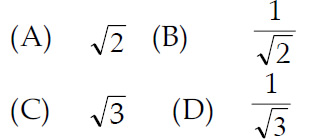
– Choice A
– Choice B
– Choice C
– Choice D
23. In a certain code ROUNDS is written as RONUDS. How will PLEASE will be written in the same code :
– L P A E S E
– P L A E S E
– L P A E E S
– P L A S E E
24. At what time between 5.30 and 6.00 will the hands of an clock be at right angles?
– 43 5/11 min. past 5
– 43 7/11 min. past 5
– 40 min. past 5
– 45 min. past 5
25. Statements:
I. All students are ambitious
II. All ambitious persons are hard working
Conclusions:
(i) All students are hard-working
(ii) All hardly working people are not ambitious
Which of the following is correct?
– Only (i) is correct
– Only (ii) is correct
– Both (i) and (ii) are correct
– Neither (i) nor (ii) is correct
26. Statement :
Most students are intelligent Conclusions:
(i) Some students are intelligent
(ii) All students are not intelligent
Which of the following is implied?
– Only (i) is implied
– Only (ii) is implied
– Both (i) and (ii) are implied
– Neither (i) nor (ii) is implied
27. Statement: Most labourers are poor
Conclusions :
(i) Some labourers are poor
(ii) All labourers are not poor
Which of the following is implied ?
– Only (i) is implied
– Only (ii) is implied
– Both (i) and (ii) are implied
– Neither (i) nor (ii) is implied
28. Line access and avoidance of collision are the main functions of:
– the CPU
– the monitor
– network protocols
– wide area networks
29. In the hypermedia database information bits are stored in the form of:
– signals
– cubes
– nodes
– symbols
30. Communications bandwidth that has the highest capacity and is used by microwave, cable. and fibre optics lines is known as :
– hyper-link
– broadband
– bus width
– carrier wave
31. An electronic bill board that has a short text or graphical advertising message is referred to as:
– bulletin
– strap
– bridge line
– banner
32. Which of the following is not the characteristic of a computer?
– computer is an electrical machine
– computer cannot think at its own
– computer processes information error free
– computer can hold data for any length of time
33. Bitumen is obtained from
– Forests and Plants
– Kerosene oil
– Crude oil
– Underground mines
34. Malaria is caused by:
– bacterial infection
– viral infection
– parasitic infection
– fungal infection
35. The cloudy nights are warmer compared to clear nights (without clouds) during winter days. This is because:
– clouds radiate heat towards the earth,
– clouds prevent cold wave from the sky descend on earth
– clouds prevent escaping of the heat radiation from the earth
– clouds being at great heights from earth absorb heat from the sun and send towards the earth
36. Largest soil group of India is:
– Red soil
– Black soil
– Sandy soil
– Mountain soil
37. Main pollutant of the Indian coastal water is :
– oil spill
– municipal sewage
– industrial effluents
– aerosols
38. Human ear is most sensitive to noise in the following frequency ranges
– 1-2 KHz
– 100-500 Hz
– 10-12 KHz
– None of the choices
39. Which species of chromium is toxic in water:
– Cr + 2
– Cr + 3
– Cr + 6
– Cr is non-toxic element
List – I (Dams)
a. Bhakra
b. Nagarjunasagar
c. Panchet
d. Hirakud
e. Tehri
List – II (River)
(i) Krishna
(ii) Damodar
(iii) Sutlej
(iv) Bhagirathi
(v) Mahanadi
Match List – I (Dams) with List – II (River) in the following :
– a-v b-iii c-iv d-ii
– a-iii b-i c-ii d-v
– a-i b-ii c-iv d-iii
– a-ii b-iii c-iv d-i
41. A negative reaction to a mediated communication is described as:
– flak
– fragmented feedback
– passive response
– non-conformity
42. The launch of satellite channel by IGNOU on 26th January 2003 for technological education for the growth and development of distance education is:
– Eklavya channel
– Gyandarshan channel
– Rajrishi channel
– None of the choices
43. Match List – I with List-II and select the correct answer from the code given below:
List -1 (Institutions)
(a) The Indian Council of Historical Research (ICHR)
(b) The Indian Institute of Advanced Studies (HAS)
(c) The Indian Council of Philosophical Research
(d) The Central Institute of Coastal Engineering for fisheries
List – II (Locations)
(i) Shimla
(ii) New Delhi
(iii) Bangalore Research (ICPR)
(iv) Lucknow
– a-(ii) b-(i) c-(iv) d-(iii)
– a-(i) b-(ii) c-(iii) d-(iv)
– a-(ii) b-(iv) c-(i) d-(iii)
– a-(iv) b-(iii) c-(ii) d-(i)
44. Which of the following is not a Fundamental Right?
– Right to equality
– Right against exploitation
– Right to freedom of speech and expression
– Right of free compulsory education of all children upto the age of 14
45. The Lok – Sabha can be dissolved before the expiry of its normal five year term by.
– The Prime Minister
– The Speaker of Lok Sabha
– The President on the recommendation of the Prime Minister
– None of the choices
46. Directions: Study the following graph carefully and answer the question.
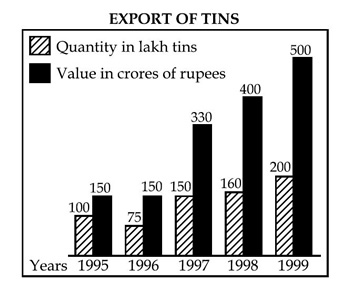
In which year the value per tin was minimum?
– 1995
– 1996
– 1998
– 1999
47. Directions: Study the following graph carefully and answer the question.

In which year the value per tin was minimum?What was the difference between the tins exported in 1997 and 1998
– 10
– 1000
– 100000
– 1000000
48. Directions: Study the following graph carefully and answer the question.

In which year the value per tin was minimum?What was the approximate percentage increase in export value from 1995 to 1997
– 350
– 330.3
– 433.3
– None of the choices
49. Directions: Study the following graph carefully and answer the question.

In which year the value per tin was minimum?What was the percentage drop in export quantity from 1995 to 1996 ?
– 75
– 50
– 25
– None of the choices
50. Directions: Study the following graph carefully and answer the question.

In which year the value per tin was minimum?If in 1998, the tins were exported at the same rate per tin as that in 1997, what would be the value (in crores of rupees) of export in 1998?
– 400
– 352
– 352
– 330
- Latest Pattern Mock Tests including comprehension based questions
- Previous Question Papers with Answer Keys - From 2004 till the most recent exam
- 75 Full Length Mock Tests - New Pattern Paper II, with 100 questions each
- 50 Mini Practice Mock tests - with 25 questions each
- Unlimited Practice - New Questions in every attempt of all mocks
- Questions & Answer Choices randomly shuffled in every attempt for better practice
- Database of over 11000+ MCQs covering the entire syllabus
- Unlimited access and practice for one year from the date of purchase
- Accessible 24 x 7 via Smart-Phone browsers and Desktops
Authentic Feedback from previous LawMint users :
I got AIR 21 in CLAT PG. Thank you so much. Your mocks helped me a lot in my preparation 🙂 - Ayushi Jain
I have subscribed to your CLAT PG program and got AIR 36 in this year CLAT PG. I have also secured AIR 54 in AILET PG exam. I would like to thank you. Your mock paper really helps a lot - Shrashank Tripathi
I would like to thank you for the CLAT PG LLM COURSE. Practising mock tests there helped me in getting confidence and hence I was able to get AIR 45 in CLAT PG LLM - Akshay Awasthi
A year back, I relied on the IIT Kharagpur RGSOIPL mock test series by LawMint to prepare for my RGSOIPL entrance test. Few months back, I relied on your UGC NET Law series to prepare for UGC NET. I was the topper of the RGSOIPL entrance, and have cracked JRF in UGC NET. All thanks to LawMint - Anshuman Sahoo
"I got AIR 18 in CLAT PG and General Category rank 28 in AILET PG. I want to thank you for helping me practice well in controlled conditions from any place. It gave me a lot of confidence and I took the tests while travelling too. I also made it to IIT Kharagpur." - Vinodharani
"Lawmint has been of great help to me in securing AIR 25 in AILET PG and AIR 29 in CLAT PG examinations. The subjective and objective approach of the test series kept me up to date with the latest exam pattern." - Bhawna Nanda
"I, Nimmy Saira Zachariah joined you clat test series. I cleared AILET PG with 30th rank. Your test series were of immense help as it gave me clear idea of where my preparations stand thank you once again law mint." - Nimmy S Z
"Hey guys. Where do I start? If I thought that getting AIR 59 in Clat PG was it, then how wrong I was. With Lawmint now I have cracked UGC NET as well." - Joyanta Chakraborty
Note : Answer Keys to all Previous Question Papers published on LawMint are available to registered users of our Online Practice Packs.
Check out all the HECI NTA NET or UGC CBSE NET Paper 1 previous question papers here : Previous Papers & Mock Tests


